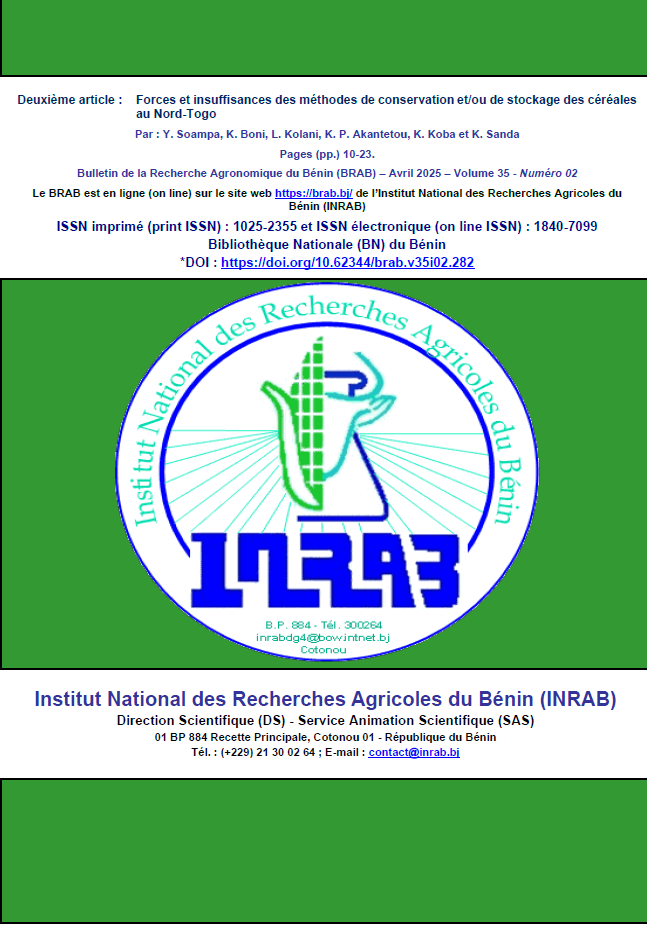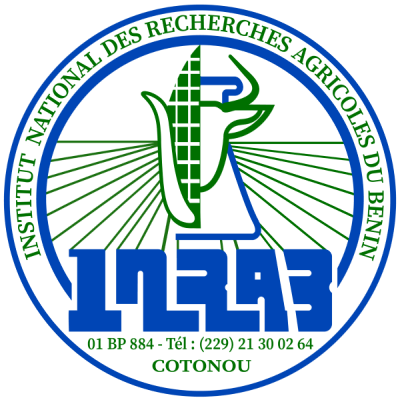Strengths and deficiencies of cereal conservation methods in Northern Togo
DOI:
https://doi.org/10.62344/brab.v35i02.282Keywords:
Rhyzopertha dominica F., Sitophilus oryzea L., Oryzaephilus surinamensis L., endogenous practices, North TogoAbstract
Post-harvest losses of cereal agricultural products are a major concern, especially in tropical Africa. This is explained by climatic factors (relative humidity, high temperature, etc.) which are favorable to the good development of insect pests making conservation difficult. To overcome this scourge, several endogenous practices have been developed by farmers. This is the case of farmers in northern Togo, more precisely in the regions of Kara (Doufelgou and Dankpen) and Savanes (Kpendjal-Ouest and Tandjoaré) who have adopted different peasant conservation measures. In order to identify the strengths and weaknesses of these practices, an exploratory study was conducted in these two regions. It emerges from this study that the means of conservation and the substances used depend on the state of the seed to be preserved (grain or raw). The majority of producers store their corn, sorghum and rice crops in bags using aluminum phosphide for large-scale conservation and plant substances for those reserved for their own consumption. In order, sorghum, corn and then rice would be better preserved in panicle, spathe and husk than in grain. More than 76% of farmers believe that insects are responsible for the post-harvest losses suffered by their products. The image catalog designed coupled with Google image and then the laboratory analysis of the collected samples made it possible to identify 8 species of major pests in cereal stocks. Rhyzopertha dominica F. in corn, Sitophilus oryzea L. in sorghum and Oryzaephilus surinamensis L. in rice are the abundant species in the granaries in northern Togo

Published
Issue
Section
License
Copyright (c) 2025 Bulletin de la Recherche Agronomique du Bénin

This work is licensed under a Creative Commons Attribution-NoDerivatives 4.0 International License.
Les articles publiés par le Bulletin de la Recherche Agronomique du Bénin sont en libre accès. Ils sont gratuits pour tout le monde, immédiatement téléchargeables dès la publication et distribués sous la licence CC BY-NC-ND (https://creativecommons.org/licenses/by-nc-nd/4.0/).







